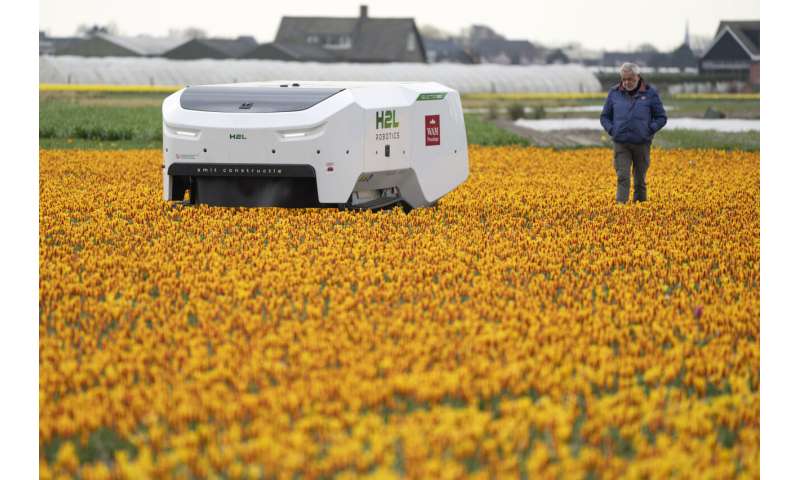2024-03-20
AI robot Theo hunts for disease in dutch tulip fields

In the vibrant tulip fields blanketing the Dutch countryside this spring, a new high-tech worker has arrived to reinforce the human crews inspecting the rainbow of flowers. His name is Theo - a boxy, AI-powered robot rolling through rows of red, yellow and purple tulips in search of any unhealthy or virus-stricken plants in need of removal.
"Theo works weekdays, weekends and nights and never complains about a sore spine despite performing hour upon hour of what would be backbreaking labor for a human worker," said Allan Visser, a third-generation tulip farmer using the robot on his fields near the North Sea coast.
As temperatures warm and the Dutch tulip season hits its colorful peak, Visser is among 45 farms deploying a fleet of disease-spotting robots to preserve the iconic flower crops that attract tourists from around the globe each spring.
The robots are a new high-tech line of defense against the devastating tulip-breaking virus, which can stunt growth, weaken bulbs and leave fields spotted with malformed, discolored flowers.
In the past, this labor-intensive disease surveillance fell solely to human "sickness spotters" like 76-year-old Theo van der Voort - the retired farm worker who gives his namesake robot its moniker.
"It's fantastic," said van der Voort, watching the AI robot trundle alongside him through fields of sunshine yellow 'Goudstuk' tulips. "It sees just as much as I see."
But where human eyes can grow weary during long inspection shifts, Theo the robot works tirelessly around the clock. With a camera-based vision system and AI model trained to identify diseased tulip patterns, it methodically scrutinizes every plant in the fields.
"It makes thousands of pictures of the tulips, then determines if each one is sick or not by its AI model," explained Visser. "The robot has learned to recognize this and treat it - it's precision agriculture."
When Theo's AI detects an infected tulip based on the telltale streaks on leaves, it marks the plant's precise GPS coordinates. That information guides human teams who later remove and discard the diseased bulbs to prevent the virus from spreading further.
While an individual robot carries a hefty 185,000 euro ($200,000) price tag, Visser believes the automated disease prevention is worthwhile for sustaining the heritage tulip harvest.
"You could also buy a very nice sports car for that money," he said. "But I prefer to have the robot because a sports car doesn't take out the sick tulips from our fields."
Theo's creators at Dutch robotics company H2L say the true power lies in fusing artificial intelligence with centuries of human agricultural expertise.
"The heart of the machine is the knowledge that we put into the AI model," said Erik de Jong, H2L's chief technology officer. "The knowledge comes from tulip farmers. We use their deep experience and combine it into an AI model."
As AI models grow more sophisticated and robotics becomes more affordable, Visser believes automated patrol robots like Theo could become as indispensable in Dutch tulip farming as the human workers they're augmenting.
With each season's success, the path is paved for AI helpers to expand across agriculture - inspecting crops, pruning orchards, or applying treatments with precision impossible for the naked eye.
But for van der Voort, the original human Theo, there's comfort in having the namesake robot carrying on his lifelong mission of keeping the Netherlands' iconic tulips vibrant and healthy.
"After 52 years checking these fields, it's nice to have an AI assistant following in my footsteps," he said with a smile, watching the robot diligently investigate yet another row of tulips in full bloom.
Share with friends:
Write and read comments can only authorized users
Last news
